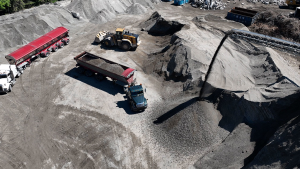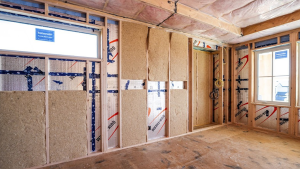Anyone who has driven from Vancouver to Seattle, or from Winnipeg to Grand Forks, for the weekend has noticed the sudden transition as they cross the border.
The road surface changes from smooth Canadian asphalt to hard American concrete.
Many Canadian drivers said asphalt is quieter and smoother and sheds water more easily. But concrete road surfaces can last longer.
So, which is better?
The City of Winnipeg uses both concrete and asphalt and it’s playing it right down the middle line; it has no plans to mandate the use of one material over the other on its road construction projects.
“Both concrete and asphalt can be engineered to provide safe and durable pavements that are cost-effective and sustainable,” said Ahmed Shalaby, professor of civil engineering at the University of Manitoba and head of the department’s pavement research group. “While they can both be applied successfully on every type of project, there tends to be more concrete pavements on heavy-duty roads and more asphalt on streets and low to medium levels of truck traffic.”
Shalaby said the main difference between concrete and asphalt is that they require different production and laying-down processes.
“Asphalt binder is typically heated and blended with heated aggregates and needs to be paved while it is still very hot,” he said. “To make concrete, cement and water are added and blended with other additives and then laid down and allowed to cure and harden.”
Asphalt is more flexible and may deform under load, while concrete is more rigid and can spread the load over a wider area.
Shalaby said the decision to pave with concrete or asphalt “is not always based on sound engineering analysis alone.”
Deciding to go with one material or the other can sometimes depend on such considerations as the source of aggregates, the availability of skilled labour, the proximity to production plants and their possible effect on the quality and cost of the final product.
“More recently, the selection of a pavement type is being made on the basis of life-cycle cost analysis (LCCA), which includes the cost to build, maintain and eventually recycle and reconstruct,” said Shalaby. “Accounting for all costs and impacts guarantees the lowest life-cycle cost.
“Small gains in life-cycle cost can mean many millions of dollars of savings plus improvements in the condition of the road network.”
In addition to the LCCA, engineers in the future are expected to make use of other recent developments in the field.
They include new recycling technologies that use most of the materials that get removed from old roads; self-healing materials that use chemical and biological processes to generate new bonds to close and repair cracks; fibre and polymer additives that strengthen both concrete and asphalt mixes and extend the life of the pavement; and embedded sensors and surface scanning technologies that detect defects early, before they become more costly to repair.
Shalaby said researchers at the University of Manitoba are building full-scale models of road structures that can simulate the impact of years of traffic on a road.
In addition to becoming more innovative, roadbuilding needs to be more efficient.
“We need to make use of all the materials and construction capacity that are available if we’re going to satisfy the demand for renewed infrastructure,” said Shalaby. “When we have more alternatives, costs are reduced and the savings get passed on to the taxpayer.”
Shalaby said more research needs to be done on the environmental side of road construction.
“Roadbuilding consumes a large amount of non-renewable resources, particularly oil and cement, and both leave sizable carbon footprints,” he said. “More guidance is needed to reduce their impact on climate change by prolonging service life, and by having policies and regulations that promote and support sustainable construction practices.”
Shalaby said he hopes both asphalt and concrete will continue to be used in road construction, and that one of them never dominates the other.
“A healthy competition between material sources ensures that we consumers have a free market and that we can get the best possible product at a competitive cost,” he said. “The competition fuels the progress of technology to innovate.”
Both the concrete and asphalt industries recognize the importance of innovation and have become more efficient and cost-effective.
“There is more that can be achieved, however,” said Shalaby. “Public agencies need to play a leadership role to accelerate the adoption of new technologies and to minimize the impact on the environment.
“For example, they could set sustainability and performance goals and offer incentives to industry for meeting and exceeding those goals.”











Recent Comments
comments for this post are closed